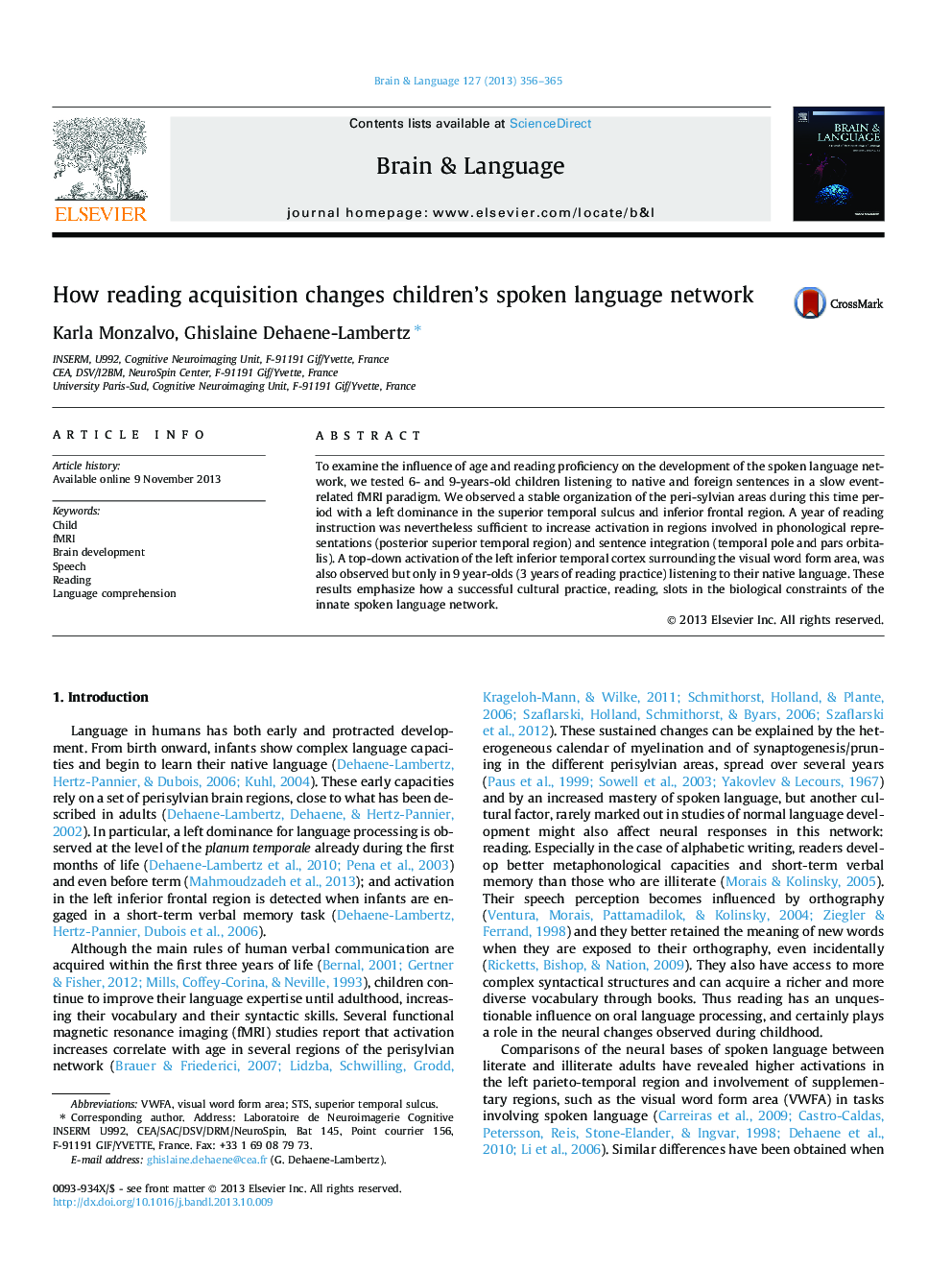| Article ID | Journal | Published Year | Pages | File Type |
|---|---|---|---|---|
| 10456382 | Brain and Language | 2013 | 10 Pages |
Abstract
To examine the influence of age and reading proficiency on the development of the spoken language network, we tested 6- and 9-years-old children listening to native and foreign sentences in a slow event-related fMRI paradigm. We observed a stable organization of the peri-sylvian areas during this time period with a left dominance in the superior temporal sulcus and inferior frontal region. A year of reading instruction was nevertheless sufficient to increase activation in regions involved in phonological representations (posterior superior temporal region) and sentence integration (temporal pole and pars orbitalis). A top-down activation of the left inferior temporal cortex surrounding the visual word form area, was also observed but only in 9Â year-olds (3Â years of reading practice) listening to their native language. These results emphasize how a successful cultural practice, reading, slots in the biological constraints of the innate spoken language network.
Keywords
Related Topics
Life Sciences
Neuroscience
Biological Psychiatry
Authors
Karla Monzalvo, Ghislaine Dehaene-Lambertz,
